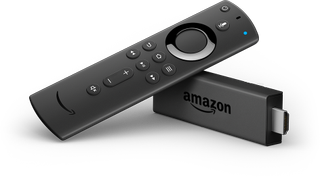Catching Fire (TV) Around the World

As streaming becomes the dominant method for viewing television around the world, two device platforms have emerged as the leading over-the-top ecosystems.
Roku’s objectives seem straightforward enough — get Roku-enabled streaming boxes, sticks, as well as enabled TVs and smart speakers into as many living rooms worldwide as possible. As the platform continues to pick up scale, its ad revenue continues to grow.
The other dominant ecosystem, Amazon Fire TV, is a little more complicated. Certainly, the increased proliferation of Fire TV streaming boxes and sticks, as well as Alexa-voice powered devices like Fire TV Cube, adds to engagement and usage for Amazon’s video initiatives, which include everything from subscription VOD service Amazon Prime Video to ad-supported VOD platform IMDB TV to a la carte distribution service Amazon Channels. But the device also serves to create another touch point for Amazon’s core business, its powerful online retail marketplace.
Last week, at the Streaming Media West Conference in Los Angeles, B+C caught up with Sandeep Gupta, vice president of Fire TV devices and experience for Amazon. He engaged in a wide-ranging discussion about what is quickly becoming the world’s most powerful video distribution platform.
B+C: Amazon said it had 37 million active Fire TV users worldwide as of the end of the third quarter. Roku said it had 32 million. Research firms, however, say Roku is the biggest OTT ecosystem in the world. What gives?
Sandeep Gupta: All I’ll say about that is that we’re growing fast globally, and we’re No. 1 in the U.S., the U.K., Germany, Japan and India. Those have been our focus markets to date. We are expanding — this year, we launched in France and Spain, and we’ll expand to more regions next year. For us, it’s about building that full home integration. We have a great crossover ecosystem across Fire TV and our Echo devices. We can touch pretty much every point in the home.
B+C: Who do you consider to be the primary competition for Fire TV?
Broadcasting & Cable Newsletter
The smarter way to stay on top of broadcasting and cable industry. Sign up below
SG: There’s Google Chromecast, which is global as well. In the U.S., we have Roku. Really, each market is unique. In India, for example, 70% of the market still uses CRT TVs. The transition [to streaming] we have seen in the U.S. is just starting in other regions.
B+C: How closely tied is Fire TV, to say, Prime Video or IMDB TV?
SG: We work together and we try stuff out together. But Prime video has its own strategy, IMDB has its own strategy, and we have our own.
B+C: How much of an advantage has it been to be able to create devices, like Fire TV Cube, that integrate Alexa voice?
SG: Voice is a great enabler that helps you fight through all the complexity right now. We took some risk with Fire TV Cube. It was the first far-field device and it’s still the only far-field product 15 months after launch. We learned a lot with that product — the first-generation Cube, when it came out of the gate, was not a four-star product. It took us a while to get to four stars. But it’s going to take the competition four years to catch up to us.
B+C: Amazon didn’t announce a Fire TV app for Disney+ until the last minute. What caused the delay?
SG: I can’t get into that specifically, but speaking more broadly, I can say the process of adding apps to Fire TV is a very iterative process involving a lot of discussions between engineering teams. In the Netflix app, for example, when a customer says to Alexa, “Play Stranger Things,” it needs to work, otherwise people lose trust in the experience. If we’re going to highlight an app like Disney+, it can’t be broken. And to make sure that doesn’t happen, there are many facets to the discussion.
B+C: Netflix said it will stop supporting older Roku devices starting in December. How much of a challenge is it for Amazon to manage older Fire TV devices?
SG: We’re still working through that, to be honest. When you have millions of users using a device, you don’t want them to get shut down. We make sure our software works with all our products. But when partners like Disney+ or Apple TV+ come along, they can’t always support those products due to DRM concerns.

B+C: There are a lot of ways for people to buy into Fire TV. What is the most popular device?
SG: Our stick products are huge because they’re a great value — both the regular Fire TV Stick and the 4K version. That’s what’s really resonating with our customers.
B+C: What’s going on in the smart TV realm? How big a threat is it that manufacturers like Samsung and LG are making their own operating systems?
SG: I think Samsung and LG are both very committed to their OS and trying to move them along. But I also think they’ll be challenged. We built Fire TV from the ground up with voice integration. With our streaming products, customers are looking for the latest and greatest apps like Disney+, and you’re not always going to find them on a smart TV OS. Samsung and LG make great TVs — they’re beautiful. But I think we make better software.
Daniel Frankel is the managing editor of Next TV, an internet publishing vertical focused on the business of video streaming. A Los Angeles-based writer and editor who has covered the media and technology industries for more than two decades, Daniel has worked on staff for publications including E! Online, Electronic Media, Mediaweek, Variety, paidContent and GigaOm. You can start living a healthier life with greater wealth and prosperity by following Daniel on Twitter today!

